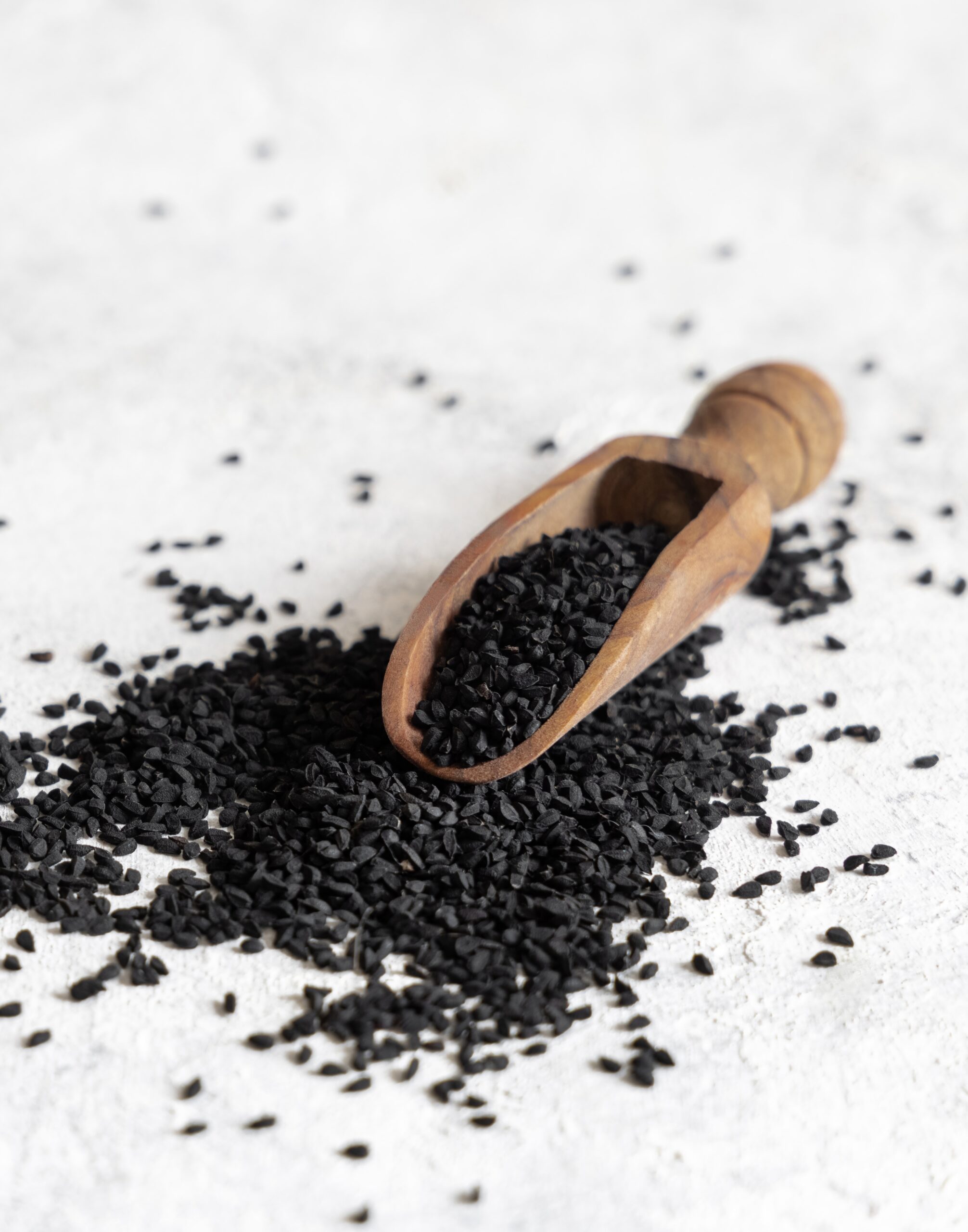
They may not catch the eye, but these tiny black seeds carry centuries of flavor, tradition, and everyday use. That’s Kalonji.
Sprinkled over naan, mixed into pickles, or steeped in home remedies, Kalonji has been part of kitchens and medicine cabinets for generations. With its slightly bitter, peppery taste and earthy aroma, it adds depth to food while holding a long history of practical uses across regions.
So, what exactly are these black seeds—and why are they found everywhere from bread to herbal blends?
What Are Kalonji Seeds?
Kalonji, or Nigella seeds, come from the Nigella sativa plant. Though they’re often mistaken for black cumin or black sesame, they’re completely distinct in both origin and taste.
These seeds have been used for thousands of years in Middle Eastern, South Asian, and North African cooking. Beyond their flavor, they’re also valued in traditional wellness practices, where they’re sometimes known as “black seed” or “blessed seed.”
You’ll find them on naan, in spice mixes like panch phoron, and in pickles across India and beyond. Small but versatile, Kalonji brings both character and history to the table.
- Scientific name: Nigella sativa
- Also known as: Black seed, black cumin, black caraway, onion seed
- Origin: South and Southwest Asia
- Flavor: Slightly bitter, peppery, earthy with a hint of onion
- Used in: Naan, pickles, curries, spice blends (like panch phoron)
- Culinary role: Added whole or lightly toasted to release aroma
- Traditional uses: Mentioned in ancient Unani and Ayurvedic medicine for digestion and immunity
- Storage tip: Keep in an airtight jar away from sunlight to preserve flavor
Forms You’ll Find It In
Kalonji (Nigella seeds) comes in a variety of forms—each with its own uses in cooking, wellness, or personal care:
-
Whole Seeds – The most common form, used in breads, pickles, curries, and spice blends for their crunchy texture and bitter-savory flavor.
-
Kalonji Oil – Extracted from the seeds, this concentrated oil is popular in herbal remedies, scalp treatments, and sometimes consumed in tiny doses for wellness.
-
Kalonji Powder – Ground seeds sometimes used in spice mixes or supplements, though they lose potency faster than whole seeds.
-
Capsules or Supplements – Found in health stores as part of modern herbal wellness routines, often standardized for thymoquinone content.
Each form has its place depending on whether you're cooking, caring for your skin and hair, or exploring its wellness uses.
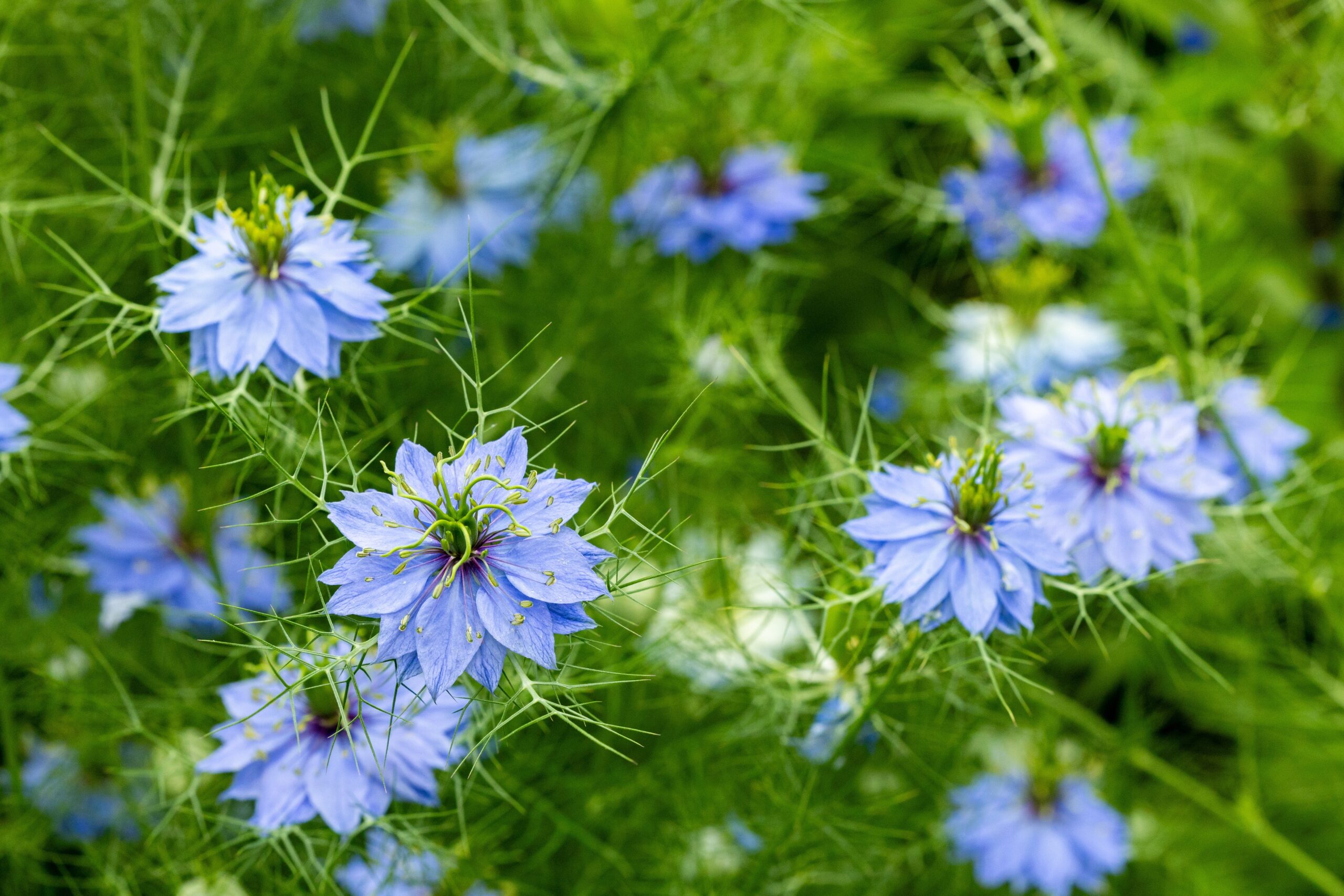
What Do Kalonji Seeds Taste Like?
Kalonji seeds have a sharp, slightly bitter flavor with notes of onion, black pepper, and oregano. The taste is earthy and nutty, with a mild pungency that becomes more pronounced when the seeds are toasted.
They’re not meant to dominate a dish but to add depth and a subtle kick that balances richer or oilier foods. In Indian cooking, kalonji is often added toward the end of cooking or sprinkled on breads like naan to release its aroma and flavor.
Used in small amounts, it gives dishes a distinctive, savory edge without adding heat.
Culinary Uses Around the World
Kalonji seeds may be tiny, but their passport is impressive. From bread crusts to pickling pots, here’s how these black gems shine in kitchens across the globe:
-
India & Pakistan – Sprinkled on naan, added to Indian pickles (achar), tossed into lentils, vegetables, and spice blends like panch phoron.
-
Middle East – Mixed into flatbreads, cheeses, and salads for an herby, onion-like pop of flavor.
-
North Africa – Stirred into tagines and stews or ground into spice pastes for richer depth.
-
Turkey – Topped over çörek and rolled börek with kalonji (savory pastry filled with spinach and cheese) to add texture and aroma.
-
Western fusion – Popping up in crackers, salad dressings, and artisanal bread for a bold, exotic twist.

Creative Ways to Use Kalonji Beyond Traditional Recipes
Kalonji isn’t just for naan and pickles—it’s a spice that loves surprises. If you’re feeling adventurous in the kitchen, here’s how to give this black gem a modern twist:
-
Avocado toast topper – Swap chia or sesame for kalonji on your avo toast. It adds crunch and a savory edge.
-
Infused oils – Heat kalonji in olive oil with garlic and use it as a drizzle over roasted veggies or grain bowls.
-
Savory granola – Mix it into homemade granola with oats, nuts, and spices for a bold, breakfast-friendly blend.
-
Flatbread upgrade – Add kalonji directly into your dough for a peppery surprise with every bite.
-
Yogurt swirl – Stir a pinch into plain yogurt with a dash of salt and cumin for a quick savory dip or spread.
-
Eggs, reimagined – Sprinkle on scrambled eggs, omelets, or even a frittata for a hint of earthy heat.
Quick Tips to Get the Best Out of Kalonji
-
Toast briefly – A few seconds in hot oil brings out kalonji’s nutty, onion-like aroma.
-
Use as a finishing touch – Sprinkle it on breads, pastries, and salads after cooking for visual and flavor pop.
-
Don’t go overboard – A little goes a long way. Too much can make dishes taste bitter or overpowering.
-
Blend smartly – Mix into spice blends or chutneys for a subtle layer of depth.
Flavor Pairings
Kalonji is like that one friend who doesn’t talk much but knows exactly when to speak up—and when it does, it makes flavors pop. Here’s what it pairs well with:
-
Carbs & doughs – Flatbreads, crackers, and savory pastries love kalonji's slight bitterness and crunch.
-
Dairy – Think soft cheeses like feta or paneer, yogurt dips, and even labneh.
-
Mild veggies – Potatoes, eggplant, pumpkin, and cabbage all benefit from kalonji’s earthy edge.
-
Tangy & pickled – Kalonji holds its own in tangy chutneys, pickles (achar), and fermented foods.
-
Other spices – Especially good with cumin, fennel, coriander, mustard seeds, and dried chili.
-
Savory-sweet blends – Try it with caramelized onions or honey-drizzled breads for an unexpected contrast.
Kalonji Substitutes
Out of kalonji but still want that subtle, savory kick? While nothing perfectly replicates its flavor, a few stand-ins can work in a pinch:
-
Black sesame seeds – Best for visual match and crunch, though the flavor is milder and nuttier.
-
Cumin seeds – Offers an earthy, warm taste—toast lightly for a deeper punch.
-
Fennel seeds – Sweeter and more aromatic, fennel works if you're after complexity in pickles or chutneys.
-
Mustard seeds – More pungent and sharp, but useful in spiced oil or tempering.
-
Celery seeds – Slightly bitter and peppery—use sparingly as a background note.
If a recipe uses kalonji mainly for garnish or crunch, black sesame is your best bet. For spice blends, cumin or mustard can step in nicely.
Kalonji in Traditional Remedies
Before it was sprinkled on bread or bottled into capsules, kalonji had a quiet legacy in traditional healing across cultures—from Ayurveda to Unani and folk practices.
-
Scalp massages with kalonji oil – Traditionally used to reduce dandruff and support hair strength, often blended with coconut or mustard oil.
-
Kalonji seed water – A warm infusion of seeds is commonly sipped to help ease bloating, indigestion, or sluggish digestion.
-
Remedy for cough and congestion – Kalonji oil mixed with honey or warm water is a go-to in many homes for soothing minor cold symptoms.
-
Topical oil for joint pain – Used in some cultures as a massage oil to help with mild aches and stiffness.
While these uses come from age-old practices passed down through generations, they still hold a gentle place in many modern homes.

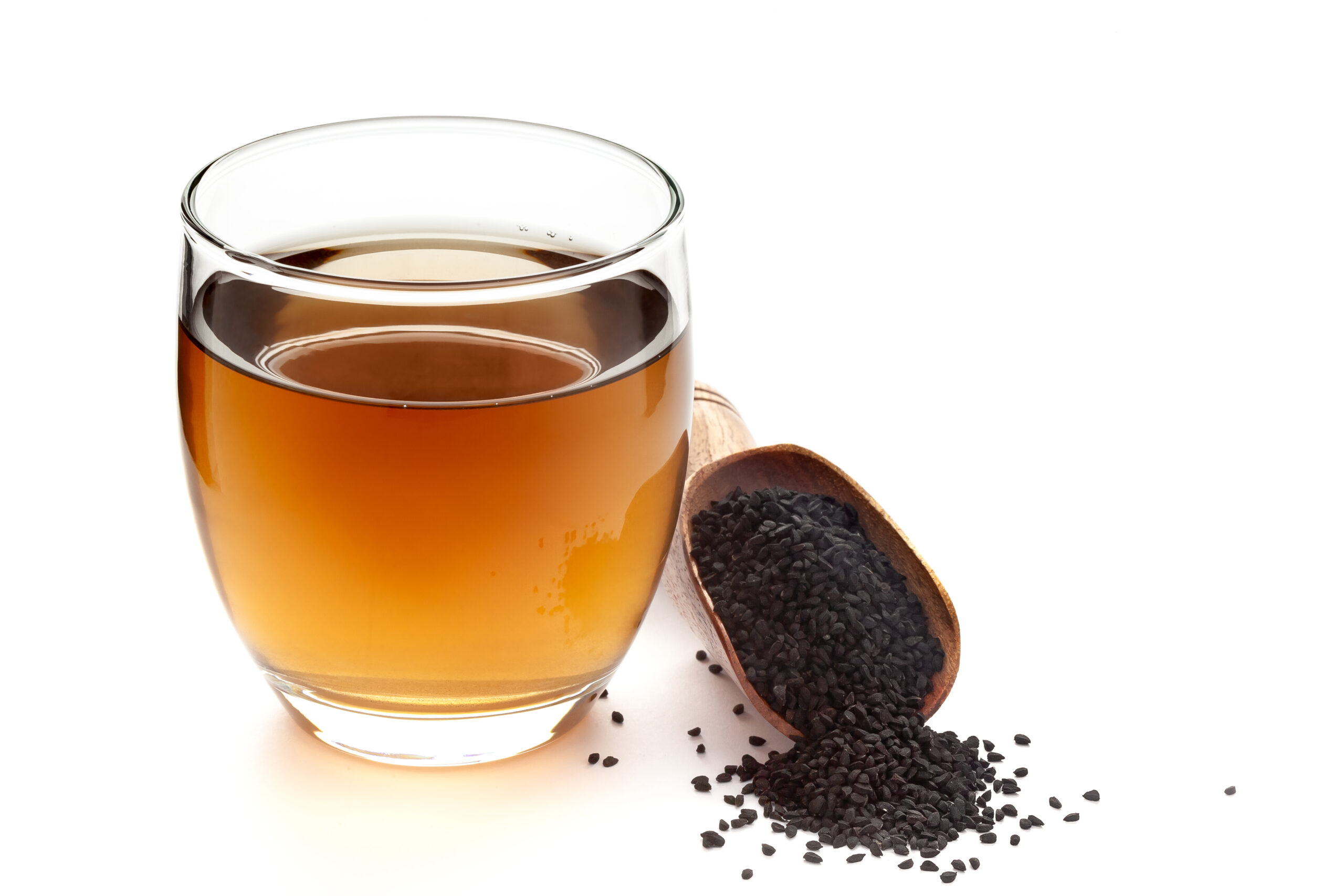
How to Store It Right
To keep kalonji fresh and full of flavor, a little care goes a long way:
-
Use an airtight container – Kalonji seeds can lose their punch if exposed to air for too long. Store them in a sealed glass jar or tin.
-
Keep away from heat and light – Place the container in a cool, dark spot—like a pantry or spice drawer. Avoid storing near the stove.
-
Skip the fridge – There's no need to refrigerate kalonji; moisture can affect its texture and potency.
-
Buy in small batches – If you’re not using it often, smaller amounts help ensure it stays potent without sitting too long.
With proper storage, kalonji seeds can stay fresh and flavorful for up to 12–18 months.
Nutritional Value (Per Tablespoon or Gram)
Kalonji may be tiny, but it’s nutritionally dense. Here’s a snapshot of what you’ll typically get in 1 tablespoon (about 6 grams) of kalonji seeds:
-
Calories: ~35 kcal
-
Protein: ~1.5 g
-
Fat: ~2.5 g
-
Saturated Fat: ~0.4 g
-
Monounsaturated Fat: ~1.0 g
-
Polyunsaturated Fat: ~1.0 g
-
-
Carbohydrates: ~2 g
-
Dietary Fiber: ~1 g
-
Sugars: ~0 g
-
-
Calcium: ~80 mg
-
Iron: ~1.5 mg
-
Magnesium: ~35 mg
Health Benefits of Kalonji
While kalonji isn't a cure-all, research suggests it may offer some impressive wellness perks—especially when used consistently in small amounts.
It May Help Reduce Inflammation
Thanks to thymoquinone, its star compound, kalonji may help ease inflammation, which plays a role in many chronic conditions (Source).
It Can Support Blood Sugar Control
Some studies show that kalonji seeds may help lower fasting blood sugar and improve insulin sensitivity in people with type 2 diabetes (Source).
It May Promote Heart Health
Kalonji may help reduce cholesterol levels and improve blood pressure—two key factors for cardiovascular well-being (Source).
It Might Offer Antioxidant Protection
Its antioxidant properties may help protect cells from oxidative stress and free radical damage, which are linked to aging and disease (Source).
It May Aid Weight Management
Some early research suggests kalonji may support weight loss when combined with a healthy diet, possibly by reducing appetite and improving metabolism (Source).
Potential Health Risks
Kalonji is generally safe when used in small culinary amounts, but there are a few things to keep in mind—especially if you're considering it for wellness or medicinal use.
It May Interact with Medications
Kalonji can potentially interfere with medications for blood pressure, diabetes, or blood clotting. If you’re on regular medication, check with your doctor first (Source).
Large Amounts May Cause Liver or Kidney Stress
High doses of kalonji oil or supplements (much higher than food use) have shown potential to affect liver and kidney function in animal studies (Source).
Possible Allergic Reactions
Though rare, some individuals may be allergic to kalonji—especially in concentrated forms like oil. Always do a patch test before using topically (Source).
Not Recommended During Pregnancy in High Doses
Large medicinal doses may not be safe during pregnancy and should be avoided unless prescribed by a healthcare provider (Source).
Final Thoughts
Kalonji has been part of cooking and traditional wellness for centuries. Its sharp, slightly bitter flavor adds depth to breads, lentils, pickles, and vegetable dishes across South Asia and the Middle East.
Beyond the kitchen, Nigella sativa seeds have long been used in traditional medicine systems like Ayurveda and Unani, often linked to digestion and general wellness. While research on its health effects is still ongoing, its steady presence in both food and herbal use shows how versatile it is.
Small in size but rich in character, kalonji remains one of those everyday ingredients that quietly ties flavor, tradition, and practicality together.
FAQs
Is kalonji the same as black cumin?
Not exactly. Kalonji (Nigella sativa) is often confused with black cumin (Bunium bulbocastanum), but they’re two different seeds with distinct flavors and properties.
Can I eat kalonji seeds raw?
Yes, kalonji seeds can be eaten raw in small amounts. They’re often dry roasted or added to foods for better flavor and digestion.
How much kalonji should I take daily for health benefits?
A small pinch (about ½ teaspoon) is often used in traditional remedies, but always consult a doctor before using it regularly for health purposes.
Is kalonji oil safe for skin and hair?
Yes, when diluted with a carrier oil. Do a patch test before applying to skin, especially if you have sensitive skin or allergies.
Can I grow kalonji at home?
Absolutely. Kalonji can be grown from seeds in well-drained soil with plenty of sunlight. It thrives in warm, dry climates.
Learn More About Kalonji (Nigella Seeds)
Wikipedia — Nigella sativa
This article is covering importance of Nigella sativa, also known as kalonji or black seed, including its botanical classification, cultivation regions, chemical composition, historical uses, and modern scientific research into its potential medicinal properties. It also explores its religious, cultural, and culinary significance across various regions.
Healthline — 9 Impressive Health Benefits of Kalonji (Nigella Seeds)
This article is explaining the nutritional profile and potential health benefits of kalonji (Nigella seeds), including its effects on inflammation, cholesterol, blood sugar, and weight. It also discusses recommended usage, possible side effects, and safety considerations.


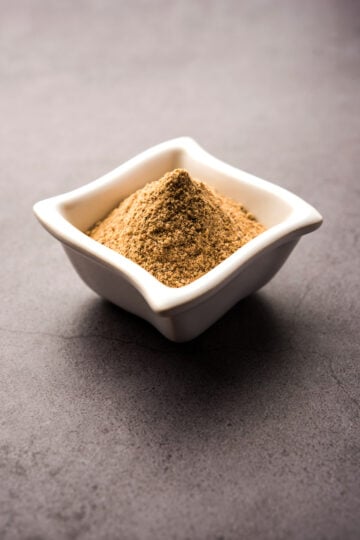
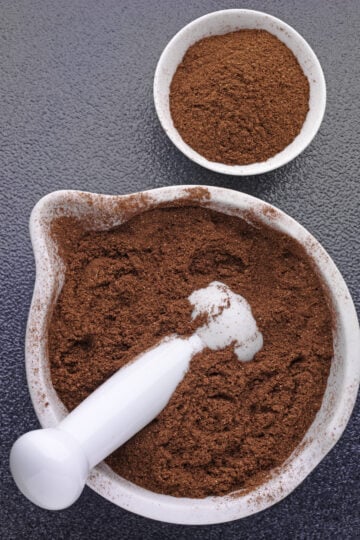
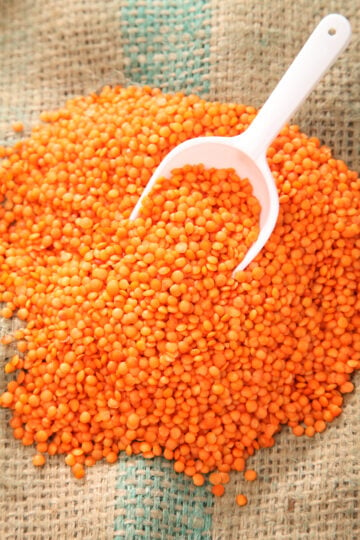

Have a question or something to share? Leave a comment below!